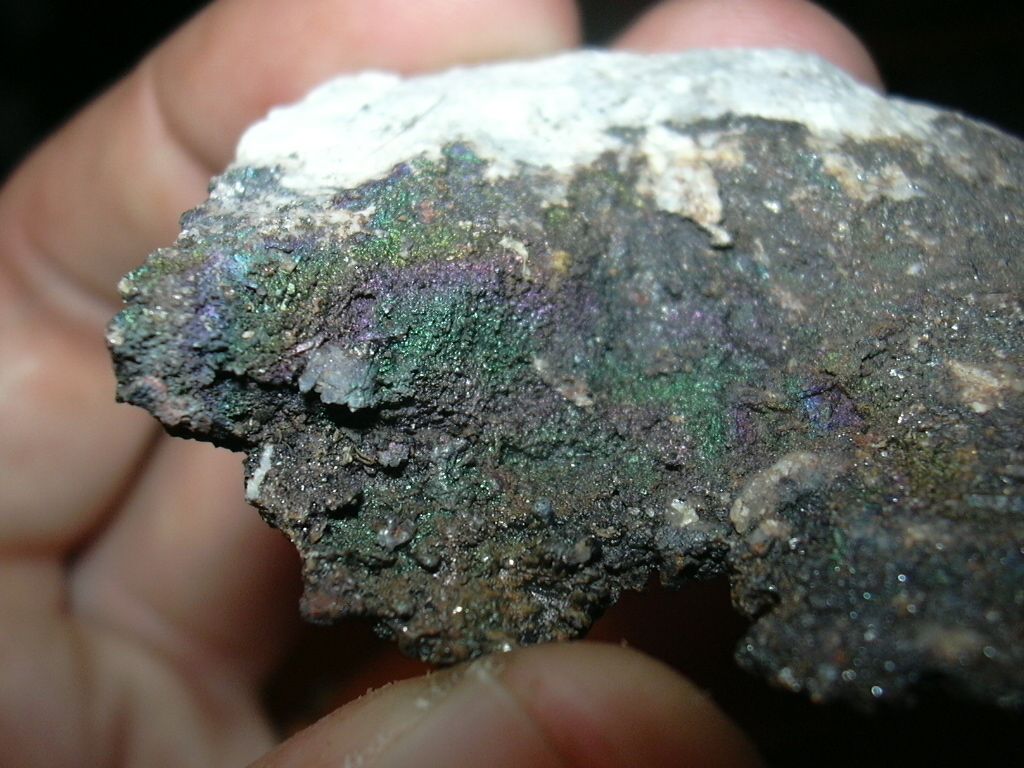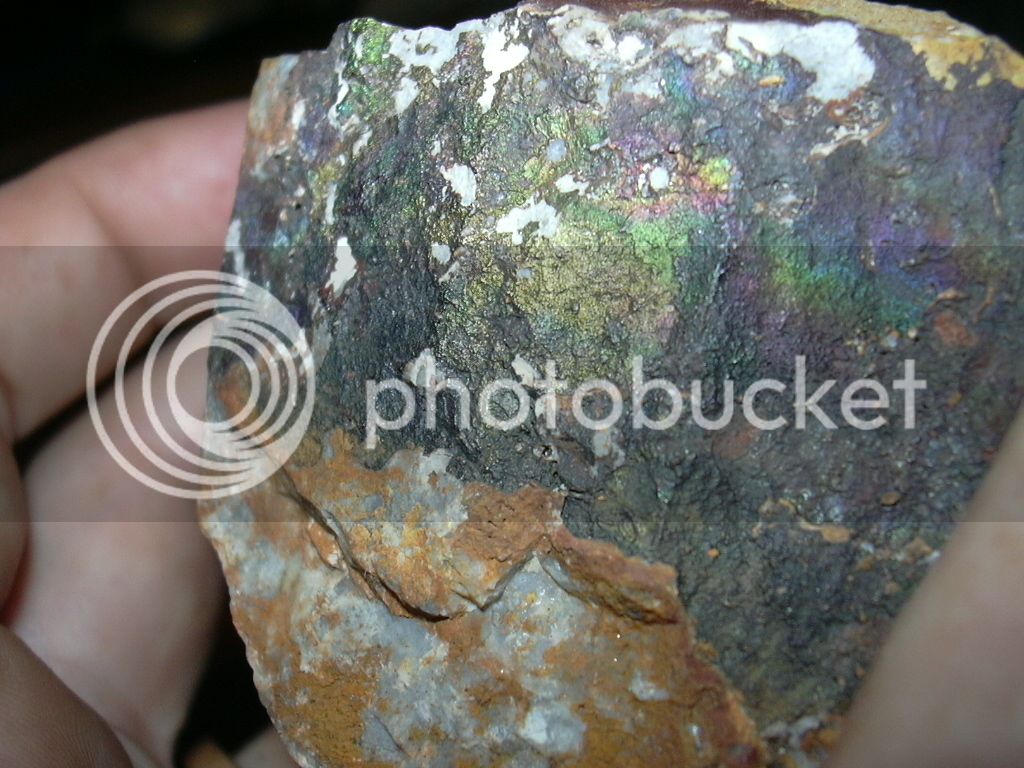You are using an out of date browser. It may not display this or other websites correctly.
You should upgrade or use an alternative browser.
You should upgrade or use an alternative browser.
What is this?
- Thread starter TimAu
- Start date

Help Support Prospecting Australia:
This site may earn a commission from merchant affiliate
links, including eBay, Amazon, and others.
- Joined
- May 16, 2013
- Messages
- 489
- Reaction score
- 660
Slag?...
TheFossickingKid
Angus Madden
Peacock ore?
Looks like Turgite.
I found a heap of that in my dads landscaping rocks that were put down 6 months ago.I thought they must be old mine tailings but from what type of mineral they were after I don't know.I took out a bucket of them to take home and sample and I think I gave them on to MJB to crush and sample.don't think hes got to them yet but now after seeing this photo my gold nerve is twitching again.I thought it maybe copper?
Peacock ore definitely.
I think mfdes has got it.
When i first started my Geo course, i spent a few trips out to a local hard rock mining area to try and put my knowledge to work. I found an outcrop very similar to your pictures and thought it was Bornite (peacock ore) because of the rainbow staining. I was then told by my lecturer it was from the oxidation of sulphides. Bornite is more of a iridescent blue and purple as oppose to the rainbow stain.
This is what i had found:


When i first started my Geo course, i spent a few trips out to a local hard rock mining area to try and put my knowledge to work. I found an outcrop very similar to your pictures and thought it was Bornite (peacock ore) because of the rainbow staining. I was then told by my lecturer it was from the oxidation of sulphides. Bornite is more of a iridescent blue and purple as oppose to the rainbow stain.
This is what i had found:


I had a look on the Wikipedia which says it is an important copper ore mineral.with a copper concentration of 68% by mass. Makes a lot of sence as leave copper out in the weather and it soon brings on this colouring as well.I know that South Australia copper ore mines are rich in gold.prominent hill and Olympic dam being the obvious ones.
The sulphides at the area i was in were pyrites, though there are quiet a few different sulphide minerals.
I am not sure of its significance as i am still learning all about this. But the gold seems to have originally been in the sulphides and was released and concentrated as other processes occurred.
This was in a geological report on the place i was at:
"Free gold occurs in the oxidised zones, but as far as present is known, not in the sulphide zones. The pyrites of the sulphide zone yield on assay 2-24 dwt. of gold per ton, the bulk of the mineral being of poor quality, rarely exceeding 2 dwt. per ton. This information was supplied by the mining men of the field.
The surface gold was contained in a variety of gossan, and was at times coarse in nature. Throughout the lode the gold occurs in irregularly distributed patches, and as films coating divisional rock planes. Very often no trace of gold is to be seen in the solid rock between these gold covered jointings.
From this it seems evident that the sulphides contained the gold, and that the surface waters reduced the auriferous pyrites to iron oxide, free gold and various soluble products."
I am not sure of its significance as i am still learning all about this. But the gold seems to have originally been in the sulphides and was released and concentrated as other processes occurred.
This was in a geological report on the place i was at:
"Free gold occurs in the oxidised zones, but as far as present is known, not in the sulphide zones. The pyrites of the sulphide zone yield on assay 2-24 dwt. of gold per ton, the bulk of the mineral being of poor quality, rarely exceeding 2 dwt. per ton. This information was supplied by the mining men of the field.
The surface gold was contained in a variety of gossan, and was at times coarse in nature. Throughout the lode the gold occurs in irregularly distributed patches, and as films coating divisional rock planes. Very often no trace of gold is to be seen in the solid rock between these gold covered jointings.
From this it seems evident that the sulphides contained the gold, and that the surface waters reduced the auriferous pyrites to iron oxide, free gold and various soluble products."
Forgot to mention peacock ore was the mineral that I did a Wikipedia search on.k man said:I had a look on the Wikipedia which says it is an important copper ore mineral.with a copper concentration of 68% by mass. Makes a lot of sence as leave copper out in the weather and it soon brings on this colouring as well.I know that South Australia copper ore mines are rich in gold.prominent hill and Olympic dam being the obvious ones.
SWright
Steve Wright
G'Day all
Its not peacock ore, its a complex of iron and manganese oxides that forms in joints in saline areas. On the rock platforms around Sydney this is very common.
Araluen
Its not peacock ore, its a complex of iron and manganese oxides that forms in joints in saline areas. On the rock platforms around Sydney this is very common.
Araluen
Similar threads
- Replies
- 4
- Views
- 672
- Replies
- 2
- Views
- 676




